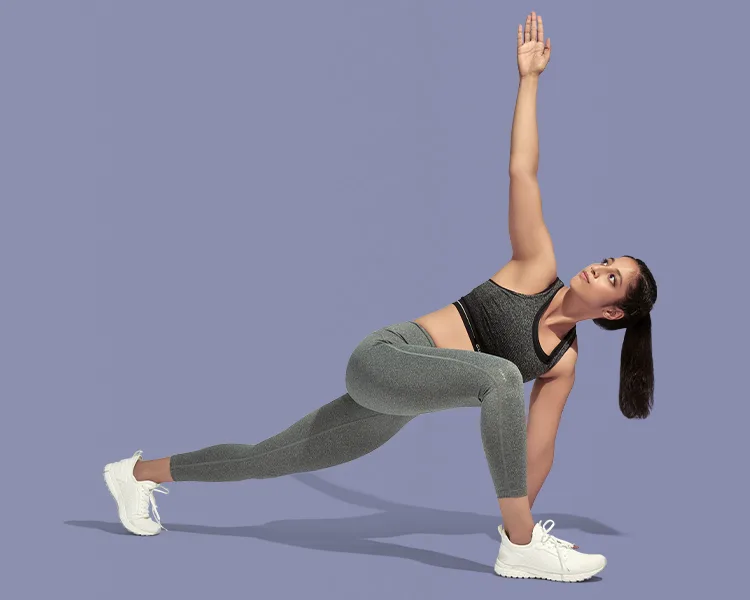An effective split workout plan may help anybody who wants to enhance their physique, including athletes, bodybuilders, powerlifters, fitness enthusiasts, and people who just want to look better. Workout splits are a reliable option if you’re looking for a programme to help you gain strength and muscle.
Importance of Exercise Breaks
It is typical to divide the training schedule when creating a training chart. The split workouts are designed with an emphasis on certain body areas and movements. Split training is the practise of dividing your weekly workouts or exercise volume into multiple days to focus on various parts of your body.
Read More: How this breathing technique might help you get quick and better sleep.
Your energy and recuperation will be maximised if you divide your workouts into smaller chunks to focus on one muscle at a time. For instance, if you squat first, you might not get the most out of your bench press. It makes more sense to emphasise various workouts on different days if your goal is to build full-body strength.

Workout Splits of Various Types
Whatever your goal is will decide how you should separate your workouts. A person who exercises to improve their athleticism, for example, will have a different split than someone who solely cares about their beauty. There are four fundamental exercise divides, and each has benefits and drawbacks.
1. The Upper and Lower Body Split
You have the option of selecting a four-day split or a six-day split under the upper lower split schedule. There is not much of a difference. Depending on your preferences and recuperation, you may opt to train for a certain number of days.
The greatest exercise split is this one if you want to train more days per week but still want a straightforward programme like a full-body split. You may work on the lower body while the upper body is healing, and vice versa.
Advantages:
In compared to a full-body split, the upper/lower body split allows for the addition of more exercises or sets each session per body segment. Depending on your needs, you can select a 2, 4, or 6-days-per-week schedule.
Disadvantages:
This split falls between between a full-body beginner split and a push/pull/legs split. It’s possible that you’ll find that each session is too brief to effectively target every muscle in your upper or lower body, and that you have trouble recovering quickly. If you choose the six-day option, this is a given.
2. Dividing Body Parts Individually
You can pick one or two body areas to focus on each day using this option. Depending on whether you want to work on your legs for one or two days each week, this might be a five- or six-day programme.
This exercise split is ideal for someone who wants to focus largely on bodybuilding or hypertrophy. Because you concentrate on each muscle for the duration of the whole training session, you may select a variety of routines and add a lot of volume every session. In a research involving 21 trained guys, a split schedule was found to be more successful in promoting muscle growth.

Advantages:
With this training approach, you may focus on a specific group of muscles and complete as many exercises and sets for that group as necessary without having to extend the session above an hour.
Disadvantages:
You can’t frequently skip sessions with this split since doing so might throw your training out of balance. Due to your muscles’ synergistic nature, it might be difficult to fully isolate a single muscle. Due to this, you could discover that you haven’t fully recovered by the time you work out again.
3. Complete-Body Split
The ideal exercise split for beginners is this one since it works well. Complex exercises that work numerous muscles at once can be demanding and stimulating. Full-body exercises have the same effect on building muscle and strengthening the body as a four-day split muscle strategy, according to studies.
This is a decent split that guarantees a solid training stimulus but leaves little time for actual training. For example, athletes who concurrently prepare for their specific sport use a lot of energy and resources.
Advantages:
You’ll develop the routine of exercising consistently a couple days a week. You can improvise on a few challenging workouts of your choice. Additionally, because you use every muscle group when you exercise, you won’t have any muscular imbalance even if you miss a session sometimes. This programme is suitable for you if you want to lift weights two to three times a week.
Disadvantages:
You are often only allowed to train one body part for one to four sets. Any more might make the workout too time- or labor-intensive. Specific muscles may need more than 48 hours to recuperate between sessions as you advance. This is because every time you exercise, your entire body is put to use.
4. Leg Split, Push, and Pull
Three portions will make up the training under this selection. On the first day, upper body pushing muscles will be trained, followed by upper body pulling muscles on the second day, and on the third day, focus will be placed mostly on the legs, including the hamstrings, glutes, quads, and calves. The muscles that aid pull are the back, biceps, and forearms, whereas the muscles that help push are the chest, shoulder, and triceps.
Advantages:
Compared to the upper/lower split, you can increase the amount of exercises and volume of your upper body training days. A little more time is allowed to rest each bodily component. For instance, if you work out your triceps, shoulders, and chest on a Monday, you’ll have three days off before doing so again.
Disadvantages:
You could wish to move to a four- or five-day programme if you’re performing a push/pull/leg split. If you frequently skip workouts, this solution is not for you. Huge muscular imbalances will result. Additionally, working out six days a week can be physically and mentally draining. This program’s nervous system exhaustion might make it challenging to constantly fully recover.

Summary:
Workout splits are a type of comprehensive strength training programme that targets all of the muscles in your body. Choose an activity based on your schedule and interests. The key element in establishing the long-term impact of your exercise programme is consistency over time.
Also, Read- Transform Your Mental Health with These 6 CBT Techniques.








